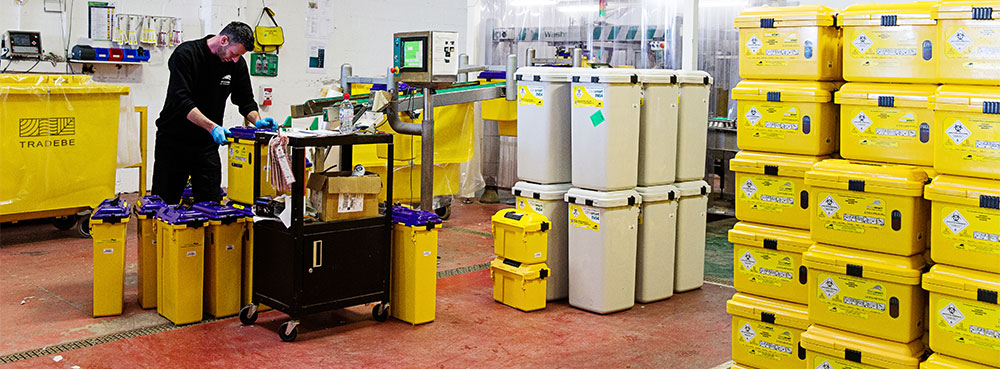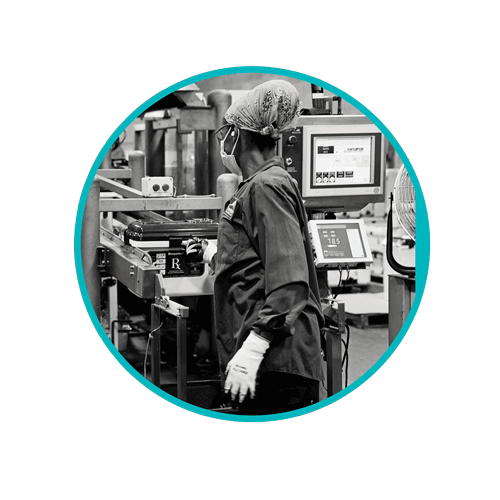How Our Reusable Containers Are Washed and Sanitised

Sharpsmart is more than simply a clinical waste management company that offers containers and customised services. We also design environmentally responsible reusable products and processes to deal with such waste. Promoting safety for healthcare providers, the general public, and the environment is our focus, and as such, our products are designed to not only minimise waste heading to landfills but also reduce greenhouse gases.
Use of long-term, cost-effective products like reusable containers have redefined waste handling methods and increased sustainability. Sharpsmart reusable containers are used throughout the UK for numerous waste streams, from simple offensive waste to cytotoxic waste, anatomical waste, sharps disposal, and pharmaceutical waste collection and disposal.
Reusability is a primary concern, but it's fair to wonder about the infection safety of this approach. So, how exactly does our company wash and sanitise containers after they have been picked up from your facility? Here’s everything you need to know about the Washsmart system.
TOPICS WE WILL COVER:
1 / Sharpsmart’s robotic washline
2 / How does the Washsmart process work?
3 / Take advantage of benefits using the Washsmart system
Sharpsmart’s robotic washline
Washing and sanitising containers used by small and large healthcare facilities alike is essential in maintaining safe and sterile conditions in any healthcare environment. Sharpsmart reusable sharps containers are emptied and sanitised using the Washsmart system. The fully automated and robotic system is used not only for decanting, but for the washing, sanitising, and drying cycles of containers.
The Washsmart system meets the strictest wash requirements for regulatory compliance. The fully automated robotic technology empties and ‘feeds’ each Sharpsmart container through an eight-step washing process that utilises a combination of high temperatures, water pressure, and biodegradable detergents (with no harmful chemicals) to achieve disinfection.
The washline starts with decontamination, where soiling from human and blood sources are completely removed. The inside of the container is then made safer for handling with a sanitisation process.
This sanitisation process is completely automated and specifically designed for ‘microbial overkill’. Three separate processes are used in this step, including physical cleansing, application of detergents designed to kill microbes, and heat treatment processes to achieve the eradication of any microbial contaminants that may linger following the first two steps. This three-part sanitization process renders the Sharpsmart containers free of any contamination caused by prewash processes and hygienic for reuse.
Washsmart Quality Control
During the sanitisation process, quality control parameters are constantly assessed. That means keeping an eye on timing, temperature, and water volumes required to achieve a deep level cleaning and sanitisation of the containers. If any of these parameters are not met or fall outside of our determined criteria, the Washsmart machine shuts itself down to be recalibrated.
Finally, the Washsmart sanitisation process requires all containers to pass a stringent Ninhydrin test at the forensic level to detect any trace of blood or blood components such as proteins.
Studies have shown that this automated technology provides a higher level of sanitisation than any other container washing methods.
Wait, so how exactly does the Washsmart process work?
A total of eight steps are used during the Washsmart process. A brief description of each step of the process follows:
- Weighing and scanning – The container is placed onto a conveyor belt, where it is weighed and scanned to ensure traceability to origin.
- Decanting and emptying – During this automated process, robot arms grasp the container and tip it upside down, emptying contents into a holding bin.
- High-pressure flushing – High-pressure cold water streams are inserted into the container to flush out residue. The highly pressurised force also removes residual fluids and dried blood.
- Washing – The container is then washed in a detergent/hot water bath at a set temperature. (This process uses recycled water from earlier stages in the cycle).
- Hot rinse – During this stage, containers are placed in a separate chamber where they undergo a high-temperature final sanitisation rinse at 85°C.
- Drying process – A heat-drying process eliminates any remnants of microbial growth through the use of strategically placed high-pressure/high-volume air jets.
- SmartGuard coating – Following drying, containers are sprayed with the unique and patented SmartGuard formulation after wash to ensure they are able to easily shed any body fluids, blood components, or sticky adhesives or dyes that come into contact with them.
- Quality control check – This last stage of the Washsmart process puts every Sharpsmart container or collector through a 15-point quality assurance check. This stage checks for cuts, stability, as well as any scuffs or smears. This process is greater than that required for cleaning at hospital levels.
The entire process enables safe and hands-free decontamination that achieves a 6-log bacterial load reduction. As an example, a 3-log pathogen ‘kill’ load is defined as one that reduces colonial bacteria to 1,000 after a 99.9% reduction, while a 5-log kill reduces a colony to 10 bacteria and a 6-log kill effectively reduces a colony to one (1) bacterium, resulting in a 99.9999% reduction.[1]

Take advantage of benefits using the Washsmart system
One benefit of using the Washsmart system for reusable containers is the reduction of waste that heads to incineration. Use of reusable sharps containers and effective sanitation systems has saved over 26 million kg of plastic that was formerly diverted to high-temperature incineration.
Reusability equates to sustainability, enhanced recycling processes, greater attention paid to waste segregation, and solutions that focus on helping our healthcare partners and facilities achieve greater results in segregation, environmentally responsible processes, and related cost reduction for waste management practices.
For more information on Sharpsmart products and services by specialty or need, call us today.

